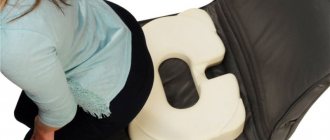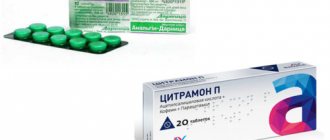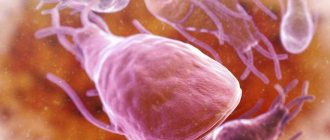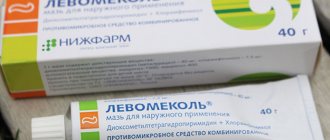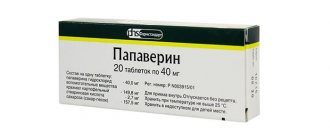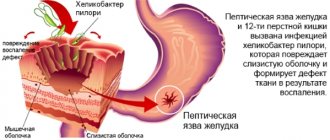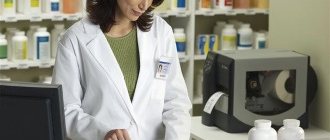Pharmacological properties of the drug Sucralfate
Antiulcer agent. Sucralfate is a compound consisting of sucrose sulfate and aluminum hydroxide. Undergoing partial hydrolysis under the influence of hydrochloric acid in the stomach, sucralfate turns into a viscous sticky mass that creates a protective film on the surface of the mucous membrane. Upon partial dissociation, the compound loses cations and acquires a negative charge, forming the polyanion sucralfate. Through electrostatic interactions with positively charged proteins of the inflammatory exudate at low pH, sucralfate is selectively fixed on the affected areas of the mucous membrane of the digestive tract (including on the surface of ulcerative defects). Sucralfate rather weakly neutralizes hydrochloric acid, but the protective film isolates and protects the affected areas of the mucous membrane, preventing the reverse diffusion of hydrogen ions of hydrochloric acid and suppressing peptic activity by preventing the binding of pepsin to the substrate (for example, with proteins in the area of the ulcer) and direct adsorption of pepsin. Sucralfate also adsorbs bile acids. In addition, sucralfate activates endogenous physiological protective factors, promoting the secretion of prostaglandins, mucus and bicarbonates in the gastric and duodenal mucosa.
Sucralfate
Sucralfate
(lat.
sucralfate
) is a gastroprotective drug.
Sucralfate is a chemical
The chemical sucralfate is a beta-D-Fructofuranosyl-alpha-D-glucopyranoside octakis(hydrosulfate) aluminum complex. Hygroscopic amorphous powder of white color. Easily soluble in dilute acids, practically insoluble in water. The molecular weight of sucralfate is 2086.75. Empirical formula: C12H54Al16O75S8.
Sucralfate - medicine
Sucralfate is the international nonproprietary name (INN) of the drug.
According to the pharmacological index, sucralfate belongs to the group “Gastroprotectors”, according to ATC - to the group “A02B Antiulcer drugs and drugs for the treatment of gastroesophageal reflux” and has the code A02BX02. The antacid effect of sucralfate is insignificant: 1 g of sucralfate neutralizes 13 meq of hydrochloric acid, and the rate of neutralization of sucralfate is at least 4 times less than that of antacids. At 1-2, sucralfate causes a short-term, within 10-13 minutes, increase in pH to 3-4, followed by a return to the original value. In dilute acids, such as hydrochloric acid of gastric juice, sucralfate forms a characteristic paste-like mass, which plays an important role in the treatment of stomach and duodenal ulcers. The degree of adhesion to the surface of the ulcerative defect of the resulting polymer film is 6-7 times higher than that with the intact surface. During the dealuminization process, sucrose sulfate anions and sucralfate cations are formed. At the same time, in the gastric juice, as a result of protonation, the process of decomposition of albumin occurs with the formation of albumin cations. As a result of electrostatic interaction, insoluble and stable compounds are formed between negatively charged sucralfate and positively charged proteins on the damaged surface of the mucous membrane. These compounds adhere to the surface of the ulcer to form a protective layer.
As a drug containing aluminum ions, sucralfate increases the synthesis of prostaglandins in the gastrointestinal mucosa, which determines its high repair activity.
Sucralfate has catalytic properties and promotes the transfer of electrons to the electron transport chain of microsomes (apparently due to aluminum ions). In patients with peptic ulcers, there is a low content of cytochrome P450 in the gastric mucosa with a significant content of the inactive form of P450. When sucralfate is prescribed, an increase in cytochromes is noted. In contrast to sucralfate, cimetidine inhibits the activity of cytochrome P450 as a result of strong binding to the heme in its molecule. It is possible that relapses of the disease when the last drug is discontinued are due to the suppression of oxygenase processes of endogenous prostaglandin biosynthesis and the weakening of the protective barrier of the mucous membrane to endogenous and exogenous aggressive factors.
In addition, it is assumed that sucralfate inhibits the adhesion of Helicobacter pylori
on the surface of the epithelium, having an indirect anti-Helicobacter effect.
Sucralfate interacts with pepsin, adsorbing it on itself, and, naturally, in the form of a suspension it is more effective than in a paste state. Sucralfate inhibits the action of pepsin by 32-55%. It also binds bile acids: 1 g of sucralfate binds a maximum of 112 mg of glycocholic acid. Sucralfate, like other aluminum compounds, inhibits the evacuation of contents from the stomach, thereby promoting constipation. Only 3-5% of sucralfate taken orally is absorbed into the systemic circulation. Sucralfate is excreted unchanged in the urine. The half-life of sucralfate is 6-20 hours (S.V. Belmer).
Sucralfate is available only for oral administration, which limits its use to patients in intensive care, since the enteral route of administration is not available. Sucralfate, being a complex of aluminum hydroxide and sucrose octasulfate, dissolves in an acidic environment, forming a protective polymer paste. Sucralfate is less effective when gastric pH increases above 4, for example, during enteral nutrition or the administration of antisecretory drugs. Some authors have noted the development of aspiration pneumonia with the use of sucralfate. Side effects of sucralfate include: constipation, nasogastric tube occlusion, aluminum accumulation in the body, hypophosphatemia. Some medications, including antacids, digoxin, fluoroquinolones, and others, interact with sucralfate, resulting in their effectiveness being reduced. In addition to hypersensitivity to sucralfate, other contraindications to its use are obstruction of the digestive tract, gastrointestinal tract, severe chronic renal failure (Nikoda V.V., Khartukova N.E.).
Indications for use of sucralfate
Sucralfate is used as a gastroprotector for the following diseases and conditions:
- gastric and duodenal ulcers in the acute phase
- symptomatic ulcers
- digestive tract stress ulcers
- erosive and ulcerative lesions of the digestive tract associated with the use of non-steroidal anti-inflammatory drugs
- hyperacid gastritis
- reflux esophagitis
- reflux gastritis
- gastroduodenitis
- heartburn
- hyperphosphatemia in uremic patients on hemodialysis
Doses and route of administration of sucralfate
Sucralfate is taken orally, 30–40 minutes before meals and at night, without chewing, with plenty of water:
- adults take 0.5–1 g of sucralfate 4 times a day or 1 g in the morning and evening; maximum daily dose - 8 g; course of treatment - 4-6 weeks, if necessary - up to 12 weeks
- children take 0.5–1 g of sucralfate 4 times a day
For patients in serious condition, sucralfate solution is administered through a nasogastric tube.
Use of sucralfate during pregnancy and breastfeeding
Sucralfate should be used with caution during pregnancy and breastfeeding. The FDA category of risk for the fetus when using sucralfate in pregnant women is B (animal studies have not revealed a risk of adverse effects on the fetus; there have been no adequate studies in pregnant women).
Publications for healthcare professionals regarding the use of sucralfate
- Belmer S.V. Sucralfate. Acid-dependent conditions in children / Ed. V.A. Tabolina. – M. – 1999.
- Stallman N., Metz D.S. Pathophysiology and prevention of stress ulcers in intensive care patients // Russian Medical Journal. – 2005. – T. 13. – No. 25. - With. 1668–1674.
- Ilchenko A.A., Selezneva E.Ya. Treatment of duodenal ulcer with sucrat gel // Attending physician. – 1999. – No. 6. – p. 16–19.
- Savarino E, Zentilin P, Marabotto E, et al. Drugs for improving esophageal mucosa defense: where are we now and where are we going? Annals of Gastroenterology. 2017;30(6):585-591.
- Instructions for US healthcare professionals (English, pdf) “Sucralfate”, tablets, 1 g.
Video for medical university students
Frame “Sucralfate” from a video lecture for 3rd year students of the Faculty of Medicine of PSPbSMU named after.
acad. I.P. Pavlova: Melnikov K.N. Drugs affecting the gastrointestinal tract On the website in the “Video” section there is a subsection for patients “Popular Gastroenterology” and subsections “For doctors” and “For medical students and residents”, containing video recordings of reports, lectures, webinars in various areas of gastroenterology for healthcare professionals and medical students.
Trade names of drugs with the active ingredient sucralfate
The following drugs with the active substance sucralfate are (have been) registered in Russia: Alsukral, Ankrusal, Venter, Sucralfate, Sukrat, Ulgastran.
Brands of sucralfate in foreign countries: Carafate in the USA, Sucramal in Italy, epsigard, Sucral, Sucrafil, Hapifate in India, Sutra in some countries of Southeast Asia, Sulcrate in Canada, Antepsin in Turkey.
The sales volume of sucralfate decreases by approximately 6% per year (Belousova Yu.B. et al.).
On the website GastroScan.ru in the “Literature” section there is a subsection “Gastroprotectors, cytoprotectors, hepatoprotectors, esophagoprotectors”, containing publications on this topic.
Sucralfate has contraindications, side effects and application features; consultation with a specialist is necessary. Back to section
Special instructions for the use of the drug Sucralfate
In animal studies, no adverse effects of sucralfate on the fetus were observed. However, adequate clinical studies have not been conducted during pregnancy and lactation, so it is unknown whether sucralfate is excreted in milk during lactation. The safety and effectiveness of sucralfate in pediatric practice has also not been established. When treating a peptic ulcer of the stomach, you should make sure that the ulcer is benign; with chronic renal failure (creatininemia over 50 mg/l), encephalopathy is possible as a result of the accumulation of aluminum in tissues, therefore long-term use of sucralfate is not recommended, as well as long-term use for hypophosphatemia.
Side effects
This drug may cause symptoms such as:
- Constipation, diarrhea, flatulence;
- Head pain, back pain, stomach pain;
- Dizziness, drowsiness, and nausea;
- Itching, urticaria;
- Dryness of the oral mucosa.
Important! Of all these manifestations, constipation is most often noted.
These conditions resolve on their own immediately after discontinuation of the drug.
With prolonged use of the drug in large dosages, if there is renal failure, aluminum intoxication may develop, including the development of encephalopathy (convulsions, myoclonus, dysarthria, pathological bone fractures, apraxia).
Overdose
In case of overdose, a person may experience symptoms such as:
Before using the drug, you should consult your doctor. Galactorrhea, thirst;- Diarrhea, constipation;
- Dry mouth, fever;
- Arrhythmia, increased excitability, increased blood pressure;
- Tachycardia, bradycardia;
- Head pain, dizziness;
- Sore throat, intestinal spasm;
- Abdominal pain, flatulence.
If you suddenly develop these conditions, then you need to stop taking this medication. Next, the patient should immediately visit a doctor. institution.
Contraindications
The medicine should not be prescribed for conditions such as:
- Allergy to certain components of the drug;
- Bleeding from the gastrointestinal tract, chronic renal failure;
- Children up to 4 years old;
- Intestinal obstruction;
- Severe form of kidney damage;
- Any disturbances in the liver.
Pregnancy
Attention! Before you start taking it, you should consult your doctor!
This medicine may be prescribed with caution during pregnancy. This is due to the fact that the active substance has the ability to penetrate the placenta, causing a negative effect on the fetus.
During admission, the girl should be regularly monitored by a doctor to eliminate the risk of negative effects on the fetus.
This medicine can also be prescribed during breastfeeding, however, the girl should carefully monitor the baby's condition.
Drug interactions Sucralfate
Sucralfate is most effective at low pH levels, so it should be taken on an empty stomach and antacids should be avoided 30 minutes before and after taking sucralfate. Sucralfate may delay the absorption of tetracycline drugs. When taken simultaneously, delayed/weakened absorption of anticoagulants (warfarin), digoxin, phenytoin is possible, so it is recommended to take these drugs 2 hours after taking sucralfate. Sucralfate does not affect the absorption of cimetidine, aminophylline, propranolol.
List of pharmacies where you can buy Sucralfate:
- Moscow
- Saint Petersburg
Storage
The medicine must be kept in a room where the temperature ranges from 15 to 25 degrees. In addition, the place should be dry and also dark. Under no circumstances should small children be allowed near the medicine.
If all recommendations are strictly followed, the medicine can be used for no more than three years. An expired product is not allowed for further use, because At best, such a medicine will have no effect, and at worst, it will only make things worse.
Dosage and method of administration
Directions for use and dosage:
Orally, 30-40 minutes before meals and at night, without chewing, with plenty of water; adults - 0.5-1 g 4 times a day (before breakfast, lunch, dinner and at night) or 1 g in the morning and evening; maximum daily dose - 8 g; course of treatment - 4-6 weeks, if necessary - up to 12 weeks. Children - 0.5 g 4 times a day. Precautions: In patients with renal failure, monitoring of serum aluminum and phosphate levels is necessary - the appearance of drowsiness and convulsions may indicate the toxic effects of aluminum. When used in combination, antacids should be administered 30 minutes before or 30 minutes after sucralfate. Administration through a nasogastric tube may result in bezoar formation with other drugs or parenteral nutrition solutions (due to protein binding properties).
Price
Important! For more information, please contact your nearest pharmacy. The article presents average prices across the country.
The cost of a medicine is based on a number of factors, which include the individual markup on the product made by each pharmacy, the purchase price, and the costs incurred by the company for transporting the product. Depending on the country, the price will vary significantly. This is due to the fact that countries have their own currencies, which have exchange rates.
Russia
In Russia, you will have to pay an average of 295 rubles for this medicine.
Ukraine
In Ukraine, you need to pay 145.89 hryvnia for the same drug.
Video on the topic: Nutrition for gastritis
Side effects
Side effects:
Dyspepsia, constipation or diarrhea, pain (abdominal, back, headache), dizziness, drowsiness, dry mouth, nausea, skin rash and itching, urticaria. Interaction: Reduces the absorption of fluoroquinolones (ciprofloxacin, norfloxacin, ofloxacin), tetracycline, theophylline, phenytoin. Increases (mutually) the toxicity of drugs containing aluminum (especially in patients with renal failure). Activity is reduced by antacids and histamine H_2 receptor blockers.
Content
- 1 Composition of the group “Antiulcer drugs and drugs for the treatment of gastroesophageal reflux”
- 2 Antisecretory drugs 2.1 Mechanisms of hydrochloric acid secretion and its inhibition
- 2.2 M-anticholinergics
- 2.3 H2 blockers
- 2.4 Proton pump inhibitors
- 2.5 Gastrin receptor blockers
- 2.6 New classes of antisecretory agents
- 4.1 Sucralfate
- 6.1 Basic and maintenance therapy drugs
- 7.1 Carbenoxolone
Antisecretory drugs[ | ]
In 1910, Karl Schwartz put forward the postulate: “No acid, no ulcer”[3]. In accordance with this postulate, many of the antiulcer drugs reduce the acidity of the gastric contents in one way or another: either by neutralizing already secreted acid (such drugs belong to the group of antacids), or by inhibiting the mechanisms of hydrochloric acid secretion. In gastroenterology, antisecretory drugs are usually called proton pump inhibitors, H2 blockers and peripheral M-anticholinergics [4].
Mechanisms of hydrochloric acid secretion and its inhibition[ | ]
The secretion of hydrochloric acid in the stomach occurs in the parietal cell. The opposite membranes of this cell are functionally very different.
The process of secretion of hydrochloric acid occurs on the apical (directed into the lumen of the stomach) membrane; it is based on the transmembrane transfer of protons and is directly carried out by a specific proton pump - H+/K+-ATPase. When activated, H+/K+-ATPase molecules are embedded in the membrane of the secretory tubules of the parietal cell and transport hydrogen ions H+ from the cell into the lumen of the gland, exchanging them for potassium ions K+ from the extracellular space. This process precedes the release of chloride ions Cl- from the cytosol of the parietal cell, thus hydrochloric acid is formed in the lumen of the secretory tubule of the parietal cell.
On the opposite, basolateral membrane, there is a group of receptors that regulate the secretory activity of the cell: histamine H2, gastrin CCKB and acetylcholine M3. As a result of their influence, the concentration of calcium Ca2+ and cyclic adenosine monophosphate (cAMP) increases in parietal cells, which leads to the activation of tubulovesicles containing H+/K+-ATPases. The basolateral membrane also contains receptors for inhibitors of hydrochloric acid secretion - prostaglandins E2 and somatostatin, epidermal growth factor and others.
The action of antisecretory drugs is based either on the blockade of stimulating effects at the receptor level, or on the blockade of intracellular enzymes involved in the production of hydrochloric acid H+/K+-ATPase. Different groups of antisecretory drugs (M-anticholinergics, H2 blockers, proton pump inhibitors and others) act on different elements of the parietal cell.
M-anticholinergics[ | ]
M-anticholinergics (synonyms: anticholinergics, M-anticholinergics) are divided into non-selective (or systemic)
) and selective. Non-selective ones affect all types of M-cholinergic receptors, and selective ones - only certain ones.
M-anticholinergics are among the oldest antiulcer drugs. Historically, the first of these are the drugs belladonna and atropine. The latter in the past was the main medicine for the treatment of acid-dependent diseases, but its indiscriminate effect on M-cholinergic receptors present in many organs gives rise to many serious side effects (tachycardia, dry mouth, accommodation disorders, irritability, headache, sleep disturbances). Platiphylline, which does not have so many disadvantages, is noticeably less effective. Other non-selective peripheral anticholinergics, such as methocinium iodide, also have a large number of side effects.
Of the M-anticholinergics, the most effective is the selective M1-anticholinergic pirenzepine, which blocks M1-cholinergic receptors at the level of the intramural ganglia and, thus, inhibits the stimulating effect of the vagus nerve on the secretion of hydrochloric acid and pepsin, without having an inhibitory effect on the M-cholinergic receptors of the salivary glands, heart and other organs. Pirenzepine (the only M-anticholinergic) is included in group A02B (ATC A02BX03) discussed in this article. However, in terms of its acid-blocking properties, it is much inferior not only to proton pump inhibitors, but also to H2-blockers, and, having no advantages over them, it, like other M-anticholinergics, is used less and less in the treatment of acid-dependent diseases [4].
H2 blockers[ | ]
H2 blockers ( synonym:
Histamine H2 receptor blockers) act competitively on histamine H2 receptors, thereby blocking the stimulating effect of histamine.
The best known H2 blockers are cimetidine, ranitidine and famotidine. See the main article “Histamine Receptor Blockers.”
Proton pump inhibitors[ | ]
Proton pump inhibitors, being integrated into the H+/K±ATPase, block its transport of hydrogen ions H+ into the lumen of the stomach.
The most well-known proton pump inhibitor is omeprazole. See the main article “Proton pump inhibitors”.
Gastrin receptor blockers[ | ]
Despite the many years of searching for gastrin receptor inhibitors and the creation of several drugs of this type, their widespread use in practical medicine is far from being achieved. The non-selective gastrin receptor blocker proglumide[5], A02BX06, blocks both gastrin receptor subtypes: CCKA and CCKB. In terms of the degree of inhibition of acid production, it is equivalent to the first generation of H2 blockers, but does not have as many side effects. Selective gastrin receptor antagonists lorglumide and devasipide[6], positioned during development as antiulcer drugs, have not yet found their use in clinical practice. In Russia, none of the listed gastrin receptor blocker drugs are registered[1][2].
New classes of antisecretory agents[ | ]
Research is currently underway aimed at creating new antisecretory agents:
- a new type of H+/K+-ATPase blockers, the so-called acid pump antagonists, which, unlike proton pump inhibitors, block the mechanism of transport of potassium K+ ions by the H+/K+-ATPase [7] ,
- blockers and stimulators of membrane Ca2+ receptors [8].
Reviews
Patients, as a rule, leave positive opinions about this medicine. Among the obvious advantages, people note the low cost, a large list of analogues, the ability to take the product during pregnancy/breastfeeding, and a convenient release form.
Among the disadvantages, patients note that pharmacies, as a rule, do not have this drug. As a result, people are forced to wait until the drug is delivered or buy another analogue.
In addition, some people are afraid of the presence of side effects and contraindications, which is the basis for refusing to take the drug.
Combinations of drugs for eradication of Helicobacter pylori[ | ]
The composition of group A02BD Combinations of drugs for eradication of Helicobacter pylori reflects the classical approach to eradication of Helicobacter pylori, which consists in the fact that eradication requires the use of “triple therapy”, including a proton pump inhibitor and two antibiotics, but the modern approach (“Maastricht consensus”) to eradication Helicobacter pylori allows the use of other drugs in basic regimens, for example, ranitidine bismuth citrate[21].
Eradication therapy is quite aggressive, since it includes at least two antibacterial drugs. Such an intervention is not indifferent to a child’s or weakened body and is often accompanied by the development of side effects[17]. In addition, the use of standard regimens is often not effective enough due to the widespread and constantly growing resistance of Helicobacter pylori strains to the antibacterial drugs used, primarily to metronidazole and clarithromycin [22]. Therefore, the range of drugs used in practice for the eradication of Helicobacter pylori is noticeably wider than those represented in group A02BD. See the main article “Helicobacter pylori eradication”.
Drugs of group A02B in the list of “Life-Saving and Essential Medicines”[ | ]
Several drugs from this group: ranitidine (solution for intravenous and intramuscular administration; solution for injection; film-coated tablets; film-coated tablets), famotidine (lyophilisate for the preparation of a solution for intravenous administration; film-coated tablets; film-coated tablets coated), omeprazole (capsules; lyophilisate for the preparation of a solution for intravenous administration; lyophilisate for the preparation of a solution for infusion; coated tablets), bismuth tripotassium dicitrate (coated tablets) are included in the “List of vital and essential medicines.”[ 36]
Analogs
Analogues of this medicine are such drugs as: Ancrusan, Ventrisol, Flax Seeds, Alsukrsal, De-Nol, Ventr, Venter, Novobismol, Sukrat, Vis-Nol, Ulgastran, Sucrafil, Vikalin, Gastro-Norm, Ampilop, Gaviscon, Gastrotilin, Omez D, Domstal, Caleflon, Ribiril, Maalox, Alyugastrin, Gastrofarm, Dalargin, Bismofalk, Kalmagin, Vicair, Gastrotsepin, Alyugastrin, Liquiriton, Anacid, Rutacid.
Important! Only a specialist should select these or other drugs.
- If you have any symptoms of the disease, you should immediately consult a doctor. You can view a list of gastroenterology clinics on our website
- You will be interested! The article describes symptoms that make it possible to suspect the presence of liver disease in the early stages
- You will also be interested in learning more about the treatment of various diseases of the gastrointestinal tract https://gastrocure.net/bolezni.html
